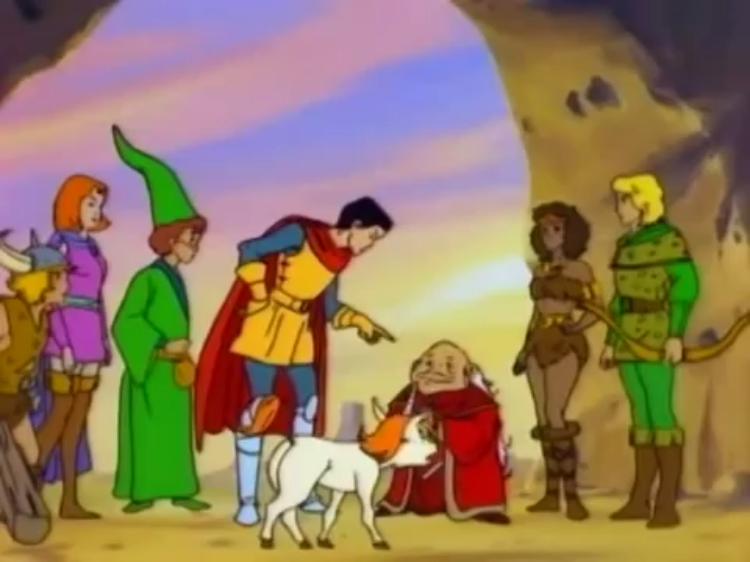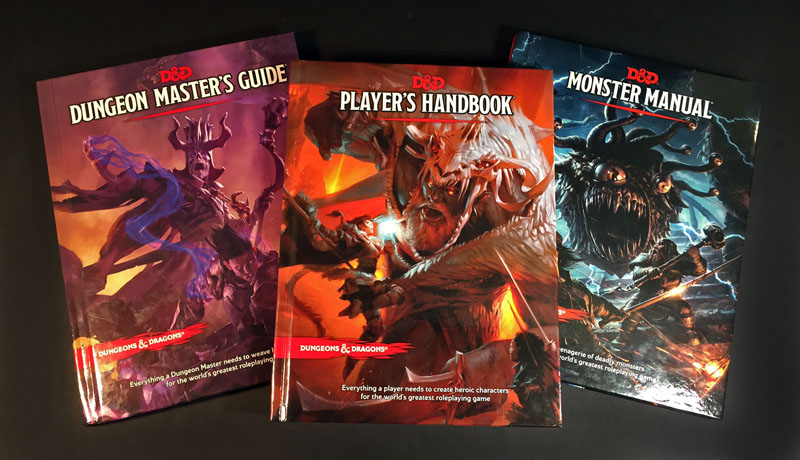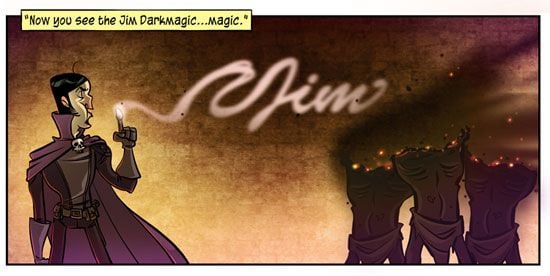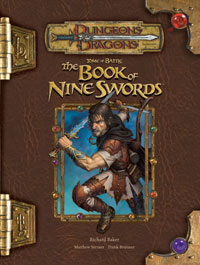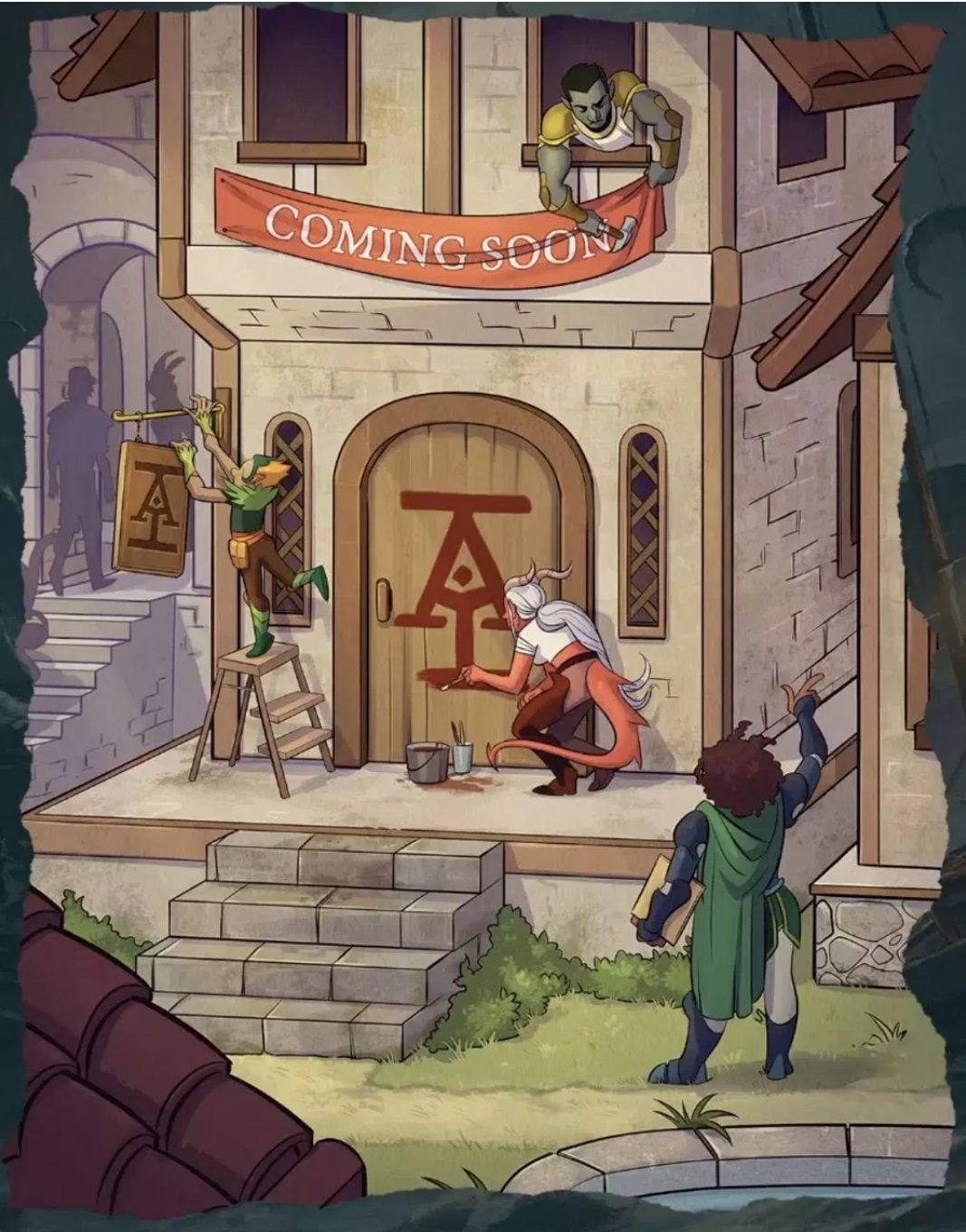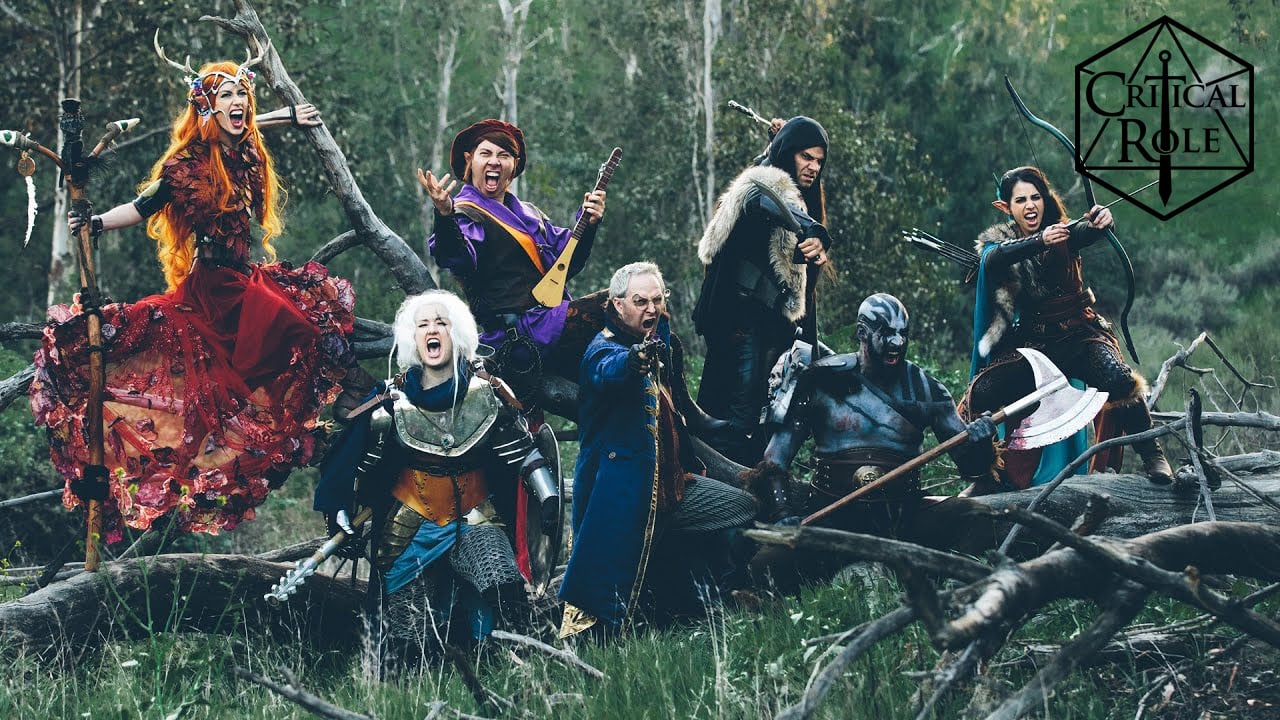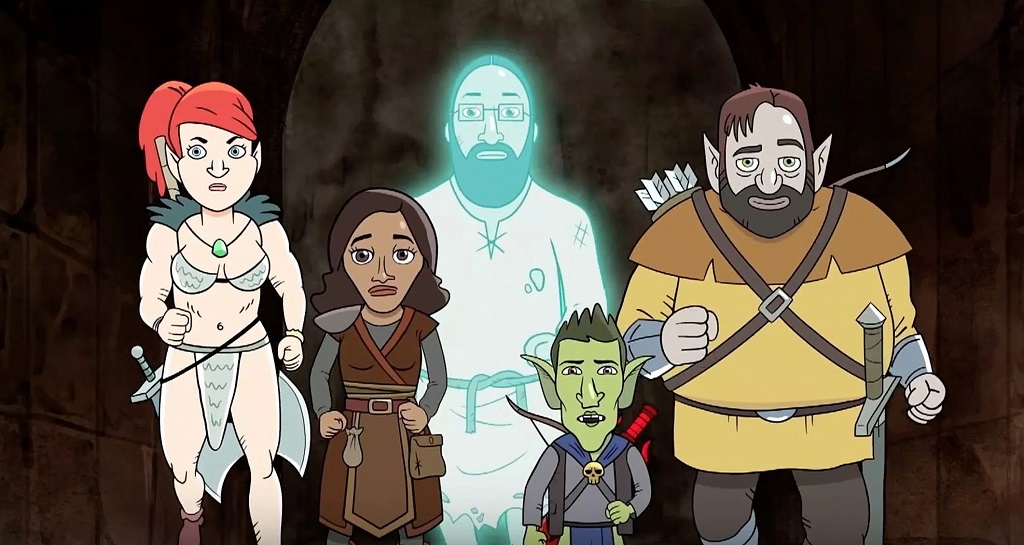RPG Supernova: The Rise Of Streaming – PRIME
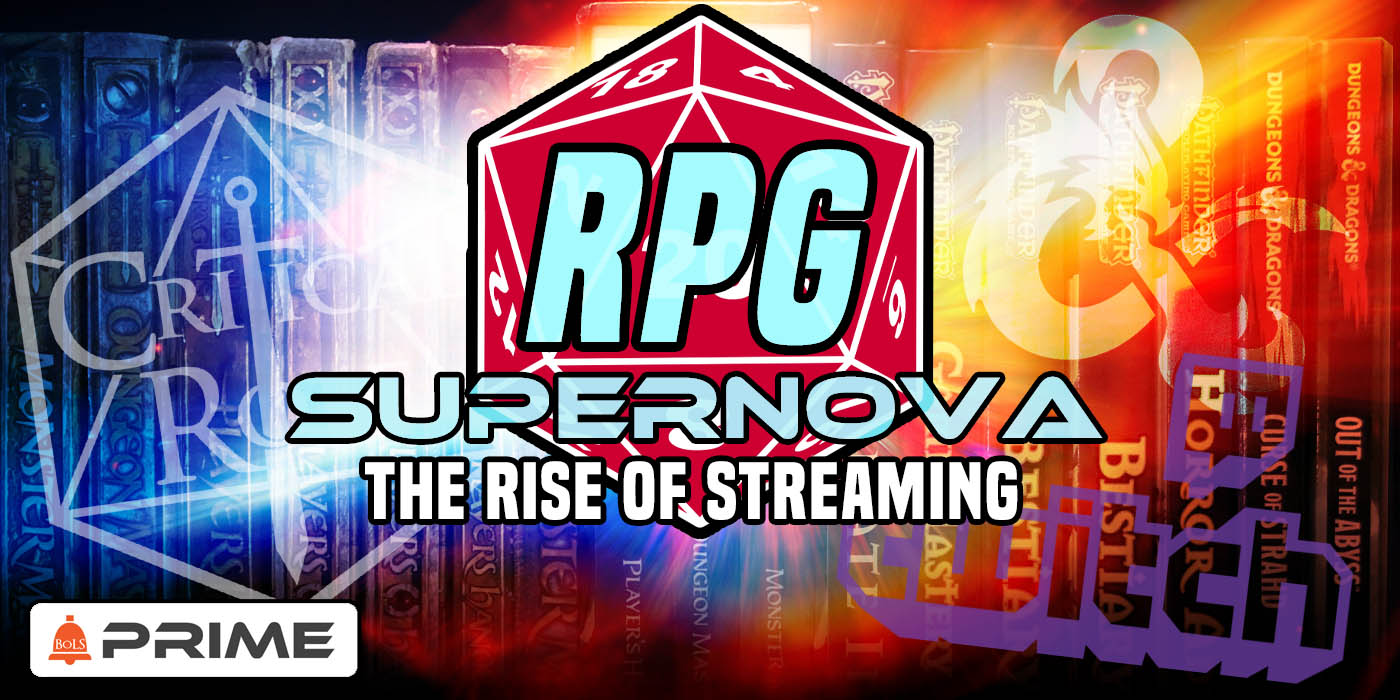
Livestreamed Shows are one of the most important parts of the RPG renaissance we’re in right now, but where did they all begin?
RPGs are in a golden age right now, there’s no denying. D&D, in particular, is leading the charge on this one–and it’s no surprise since D&D has basically defined the RPG industry since its inception. This in spite of the fact that the company that created it went defunct, and a mere decade ago, D&D was about to reach it’s nadir, losing out its hold to upstarts like Pathfinder (which was also D&D) for the first time since 3rd Edition. And yet, even as 4th Edition nearly brought about an end to D&D (if you believe the hype), the seeds were being sown to help D&D blossom into the megalithic entity that can count on appearing in at least one major piece of “mainstream” media about once a month or so. We’re talking the New York Times, the Washington Post, Forbes (though they have long been enmeshed with gaming), Time Magazine–oh wait that one’s from 2008.
Sorry, folks have been “discovering” that D&D is cool for about a decade now, it’s easy to lose track. But you get the point, D&D is everywhere now. And a lot of folks will point to a few things: Stranger Things absolutely is one of them. Perhaps the most visible if you’ve never had any exposure to D&D. Three years is a long time on the internet, but in 2016, this show, lovingly set in the 80s was a massive injection of pop culture blood into D&D’s metaphorical veins. And while some of you might remember that Freaks & Geeks had their own episode centered around D&D, where James Franco played a dwarf named Carlos:
…Stranger Things made D&D matter to the story as well as to its characters. It wasn’t just one in a series of a slice of life episodes, but a thing of lingering focus for the main crew of kids on bikes in the show. But also, and again it all kind of comes to a massive head in 2016, you had a boom in a new way to enjoy D&D–by watching other people play it. Not that D&D streams/podcasts were all that new in 2016, you’d have to jump back two years to find a big boom, but 2016 is where a lot of them really landed. It’s hard to think of it, but Critical Role had only been around about a year at this point. And shows like The Adventure Zone and Friends at the Table were really hitting their stride. And of course, at every PAX you could find a live show of Acquisitions Incorporated. Acq Inc. is such an interesting show–because it began as a podcast back in the earliest days of podcasting, and since blossomed over 12 years into its own official, WoTC imprinted sourcebook complete with characters that are now embedded in the D&D canon, like Omin Dran, a masked lord of Waterdeep.
Where It All Begins
And Acquisitions Incorporated is, in a way, where it all begins, almost a dozen years ago back in 2008. So grab your low-rise jeans, your Von Dutch hats, cropped vests, and Ed Hardy T-Shirts (editor’s note: dear lord, you can smell the naive overconfidence that masked deep insecurity under a layer of Axe Body Spray applied liberally underneath a popped collar from here) and step back in time to the very first D&D podcast. Well… not the very first one. For that, we’d have to go back to 1982 when Podcasts were called radio shows…
AdvertisementIn the early 1980s, at the height of the Dungeons & Dragons fad, TSR heavily promoted the game in mainstream media. This went far beyond mere advertisements: they developed dramatic renditions of D&D as media properties. The most famous result was the Saturday morning cartoon show, though we know of many other projects that never quite made it into production, such as the undeveloped feature film. We must now add to that category a new entry: a syndicated radio program. Unlike the cartoon show or the movie, the planned radio series depicted the actual play of a D&D session rather than dramatizing a loosely-related story: in that respect, it is a long-lost ancestor of contemporary media sensations like Critical Role or Acquisitions Inc. Today, as a special “audio” edition of Playing at the World, we take a listen to the original pilot for the radio show, and consider its relevance to the game spectatorship culture of today.
Oh well, I guess let’s do exactly that. You can find two different recordings of this first radio adventure, which both help highlight the whole concept behind these shows anyway. You can find a version above from games historian Jon Peterson’s Playing at the World, and the version below is taken from the same recording seen through the lens of the Dragon Talk Podcast.
Both of these recordings reveal the core concept behind these shows. The original idea was a dramatic rendition of D&D as a radio show. This was all done in the early 1980s after TSR had split into four different companies, but the one we’re the most interested in is TSR Entertainment. This company was given to Gary Gygax, shortly before his fall and ultimate removal from TSR, but at the time it was part of Gygax’s initiative to try and bring D&D to the masses. One of the big problems that TSR faced was market saturation. With wargamers spreading the game across their own circles, and rapid growth in terms of its audience, TSR was hungry for a way to break D&D into mainstream entertainment. To tackle this, there were D&D novels, a series of adventures inspired by Choose Your Own Adventure, and of course the media efforts that we’re all familiar with.
But the D&D Cartoon was not the only piece of D&D media created. The Radio Show would never catch on, but its concept was solid. Something that could introduce players to the game, both immersing them in the story while also showing them how to play by example. Because one of the biggest problems with D&D is getting the concept across to new players.
While a lot has changed since the days of the 1980s, and in the ensuing 30 odd years, a lot of work has been done to bring fantasy into the mainstream. Video games helped bring D&D into a different swath of gamers’ homes, movies like the Lord of the Rings helped set the tone for a new generation, and D&D’s influence grew like thirsting tendrils as a generation raised on games like D&D matriculated into society. But one thing has remained challenging, which is setting an example of play. There’s a world of difference between reading through a D&D book and actually playing the game.
I know from experience–my own first steps into D&D were very tenuous. I had the core set of three rulebooks long before I would ever play a game, and spent days reading through monster entries, player classes, and more. But until you see it in action, until you have the basic vocabulary of “hey this is how a game works” it’s not the most practical advice. Once you’ve played, sure, you can pore through the rules to understand interactions–but just like video games and their tutorial levels slowly introduce the concept of play to new players, D&D needed to establish a basic vocabulary. Which is where the radio show would have come in. It was only a quarter-century ahead of its time. Sadly, only the pilot episode ever happened, otherwise we’d probably all be listening to the syndicated episodes of it.
Instead let’s jump 25 years, back to 2008, when things were looking bad, but nobody had quite said, ‘hey those predatory lending practices that were ultimately not economically sustainable are maybe ruining the economy’ because the Great Recession wouldn’t be officially declared until December, but society had already begun stealing the wealth and momentum from an entire generation, but hey let’s blame Millennials for the fact that you can’t get straws anywhere anymore. At any rate, in 2008, when Penny Arcade still made comics about video games, Chris Perkins sat down with creators Jerry Holkins and Mike Krahulik, along with friend and fellow cartoonist Scott Kurtz of Player vs. Player sat down to play D&D for the first episode of what would become Acquisitions Incorporated.
This first episode is an important one. Not only is it the first time (as far as we can tell) that a podcast like this aired, it’s also the introduction to 4th Edition D&D. While the core rulebooks wouldn’t be introduced until June of 2008, in May an adventure called Keep on the Shadowfell, one of the best introductory adventures WotC has ever produced, came out. Accompanying it, a set of basic rules that looked promising, pre-generated characters with a few key choices to make, including (and especially) names.
Now WotC, like TSR before them, had already been looking for ways to expand D&D into a wider audience. 3rd Edition D&D was incredibly popular, but it hit a phase where its own growth was unsustainable. Like 2nd Edition, which also had a revised ruleset released about halfway through its development cycle, 3rd Edition D&D had also the problem of coming up in a landscape shaped by the OGL. The Open Gaming License, as we’ve talked about before, helped set the stage for the current RPG market out there. But it brought with it a host of problems all its own, including a glut of new splatbooks and publishers.
As 3rd Edition changed to 3.5 you could see the designers moving towards a new paradigm for D&D. Gradually they moved away from the old paradigms of editions past, and instead asked the question: what if you had something fun to do every turn? You could see a shift in the wind being tested in games like Star Wars: Saga Edition and with later 3rd Edition supplements like the Book of Nine Swords.
But 4th Edition was different from what you expected from D&D. So different, in fact, that the time was probably ripe to help introduce new players to the game. And with Penny Arcade hitting their stride in terms of popularity (and being just over there compared to WotC’s HQ), it seemed like a no brainer to partner with them and come up with something to reach more nerds than before. Holkins is a longtime D&D player, but Krahulik had been newer to the RPG sphere.
The first episode of Acquisitions Incorporated is one that showcases players making their way through the starter adventure for 4th Edition. It introduces players to the game with some popular figures (at the time). Eventually, the show would expand, with the core trio of Acquisitions Incorporated bringing on guests over the years, including Wil Wheaton as a famously reckless intern, Patrick Rothfuss, and Kris Straub of Chainsawsuit (and other parts of the internet). As they grew in popularity, they would eventually perform Acquisitions Incorporated live at the Penny Arcade eXpo. In 2010 the very first live show aired, featuring guest Wil Wheaton–which is an important connection for the big podcast/stream/actual play boon that would come later.
At this point, though, it’s important to note that while there are plenty of D&D related podcasts, none had quite presented D&D like this. Fans could engage with the story, listen to table chatter, and get a sense for how the game can be played. And once you have an example of how it works that you can see, it’s a lot easier to jump into the game. Acquisitions Incorporated would steadily run their show with increasingly ridiculous costumes and set pieces and guest stars until they’d spin-off a new web series, the C-Team, flirt with live and video elements, and eventually create their own book. But we’ll get back to all that.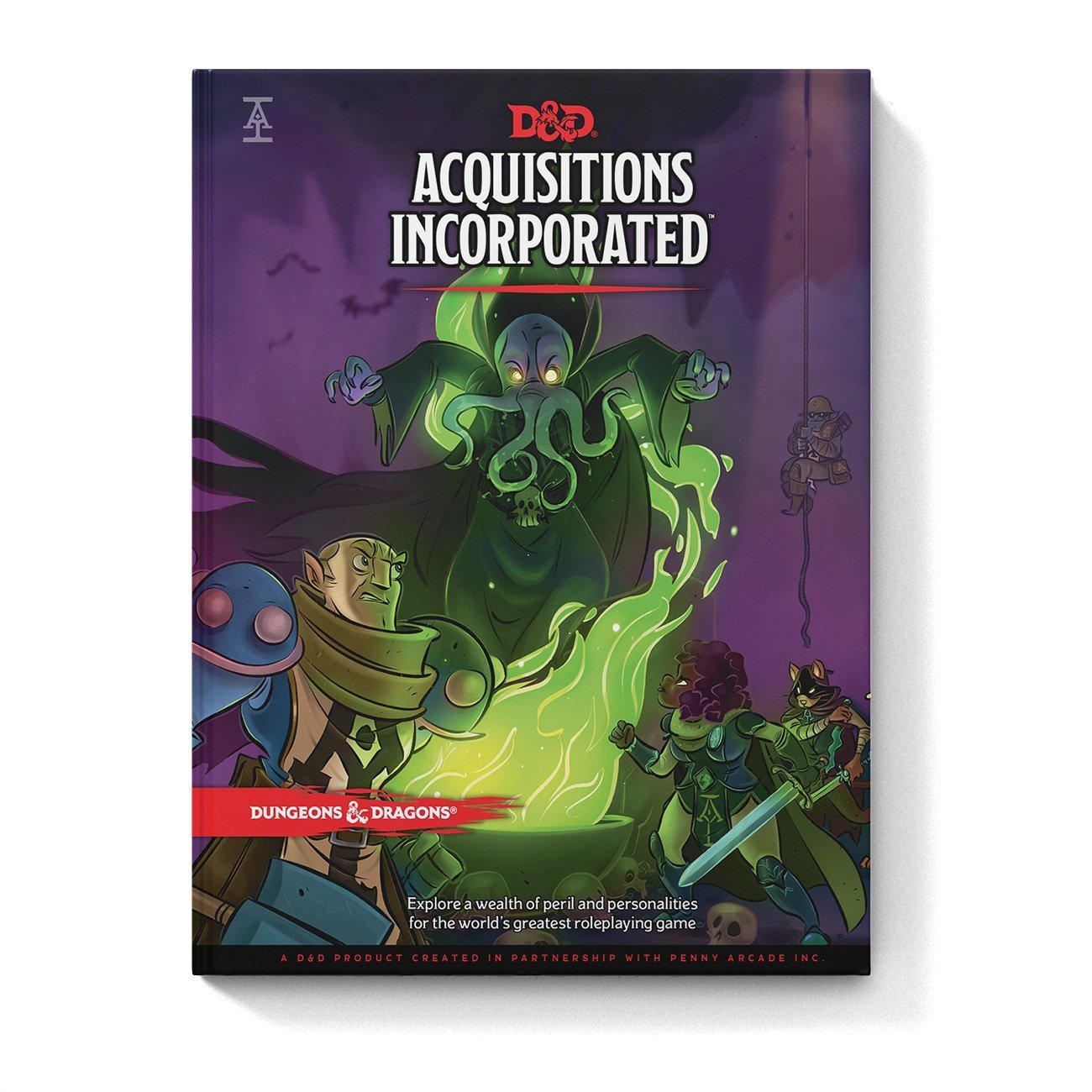 More Podcasts Appear
More Podcasts Appear
Following them, you would see a few other long-running podcasts cropping up, along with the growth of the term “actual-play podcast” because it would be a while before streaming video caught on, as we’ll see. But Actual Play has been around since at least 2012 when the still-running podcast Greetings Adventurers began their show. Their own first episode is below:
Again, as you listen to it, there’s a degree of having the curtain pulled back. You get not only the story but also the game elements explained in it. There’s a lot of table-talk, players talk over each other, there’s a ton of meta-commentary–it’s basically what a lot of the early shows were like. Around this time, you also saw the launch of Brian Posehn’s Nerd Poker.
Welcome to the first episode of NERD POKER: DUNGEONS AND DRAGONS WITH BRIAN POSEHN & FRIENDS! Join Brian Posehn as he engages in a weekly game of D&D with his funny friends Gerry Duggan (co-writer of Marvel’s Deadpool), Blaine Capatch (Comedy Central’s Beat the Geeks), Ken Daly (The Usual Suspects), Sarah Guzzardo (AvoidThisJob.com), and Dungeon Master Scott Robison (Mr. Sark). This week they explain the game of D&D, introduce their characters, and embark on their adventure aboard a pleasure cruise.
Comedy and D&D are a natural pair, and a lot of the early stuff is very funny, and there’s no denying the star power at play here. But even Nerd Poker wouldn’t catch on like another show that began, in a way, in 2012.
Enter Critical Role
2012 is an important year for the story of live streaming for a number of reasons – it’s when many shows began, for one. It’s also the year that a voice actor named Matthew Christopher Mercer would put together a birthday session of D&D for fellow voice actor Liam O’Brien’s birthday, running a streamlined version of D&D 4th Edition, before switching to Pathfinder.
@jaa0109 @CriticalRole The veeeery first session was very simplified 4E combat rules (we had new players), so we used he sheets/color coding
— Matthew Mercer (@matthewmercer) November 19, 2015
@jaa0109 @CriticalRole @VoiceOfOBrien It was very simplified 4E for just combat abilities.We converted to full Pathfinder right after.
— Matthew Mercer (@matthewmercer) November 19, 2015
You can even hear Sam Riegel and Liam O’Brien talking about the experience on their All Work No Play Podcast and even gush about the game a few episodes later, having played the game, saying of Mercer, “He is so committed to his dungeon mastering. He is so good. He played seventeen different characters and embodied them physically.”
Mercer’s game gained some popularity on social media, as the voice actors teased fans with details of the game. And it might have stopped there, but for Felicia Day, who at the time was still running Geek & Sundry–and that’s where Wil Wheaton comes in. Also in 2012, one of the biggest hits on Geek & Sundry was the Wheaton-run show, Tabletop, which featured different geek celebrities playing games. A fact that would be in Day’s mind when she and Ashley Johnson met on the set of Spooked, which is where the whole idea for Critical Role going on the internet begins. As Day puts it:
“My friend Ashley Johnson, who I know from the Whedonverse crowd, mentioned in passing a few years back she was part of a D&D group comprised solely of voice actors.
I was immediately drawn to the idea of bringing them to Geek and Sundry, because I love D&D and knew our fans would love to watch, a-la Tabletop. A bigger filmed show like that didn’t materialize immediately, but when I decided to launch a twitch channel earlier this year, the group was at the top of my list.”
Them being at the top of the list caught much of the cast by surprise. Even Mercer expressed doubts about the viability of it:
I mean, we were playing privately for two years before the show even started, and I’ve been playing for most of my life, really, at this point, but there was never a form of media out there that was a good solid example of what a game of Dungeons & Dragons could be. When it would pop up in conversations publicly, people would go, ‘Oh yeah. How does that game even work?’ It was just a hard thing to describe to people, when you had to answer that question. When we were asked to possibly do this in front of cameras, it was that topic of, ‘Well, do we put something we love on the Internet?’ The firing squad that is the comments section of the Internet? Inversely, what kind of positive aspects can come out of one putting a good example of the game online, and possibly bring more people into the community, to realize what they’ve been missing, because it really is a wonderful, fun activity, for friends and strangers alike to get into.
Off to the Races
The rest, as they say, is history. In 2015, the first episode of Critical Role aired, and it was a very different kind of D&D show. The table-talk and jokes were still around, but now there was a drive for a much more personal story–the sort of thing you’d see in a home game. This was D&D for people who were looking for a certain kind of D&D, not necessarily looking for people to mess around with the concept of D&D, which, don’t get me wrong, I love. But this was something much different than, say, Chris Perkins running D&D as best as he can while the writers of Robot Chicken goof their way through an adventure.
It’s entertaining, but there’s a difference between this and a show like Critical Role. Even though their first episode was rough, and the audio quality is, charitably, a mess–and one of the party couldn’t be there because they were in London getting a BAFTA for The Last of Us. But there was something there.
I think a huge part of it is that it’s presenting D&D in earnest. Many of the early shows like Acq Inc. are comedic–and while Critical Role is funny as well, their humor comes from their characters, instead of from the people playing the game themselves. And that made waves, it showed players a different take on the game. Gave them insight into how it’s played–dramatically doesn’t feel like the right word, call it earnestly. That’s at the heart of all the biggest shows. Well, that and the key of already being famous, which will work for anyone, be they famous video game voice actors (because who wouldn’t want to watch McCree and Ellie, from The Last of Us, playing D&D) or McElroys, or comedians/creators of Rick and Morty.
But even without that star power, streamed shows bring games the way people like to play them into your home. So that even if you don’t have the time to play, there’s still another way to keep your hand in. Or to see what other people are doing. That earnestness is what builds community, and what leads to people playing D&D so hard they cry in front of the whole internet when their characters die or tell amazing stories.
As we head into 2020, with an Amazon Prime animated special raising the ceiling of where shows like these can go, it’ll be interesting to see what the next wave will be in the live play community. We’ll be here for it, wherever it takes us.
Happy Adventuring! What was the first live show you listened to? Let us know in the comments!

